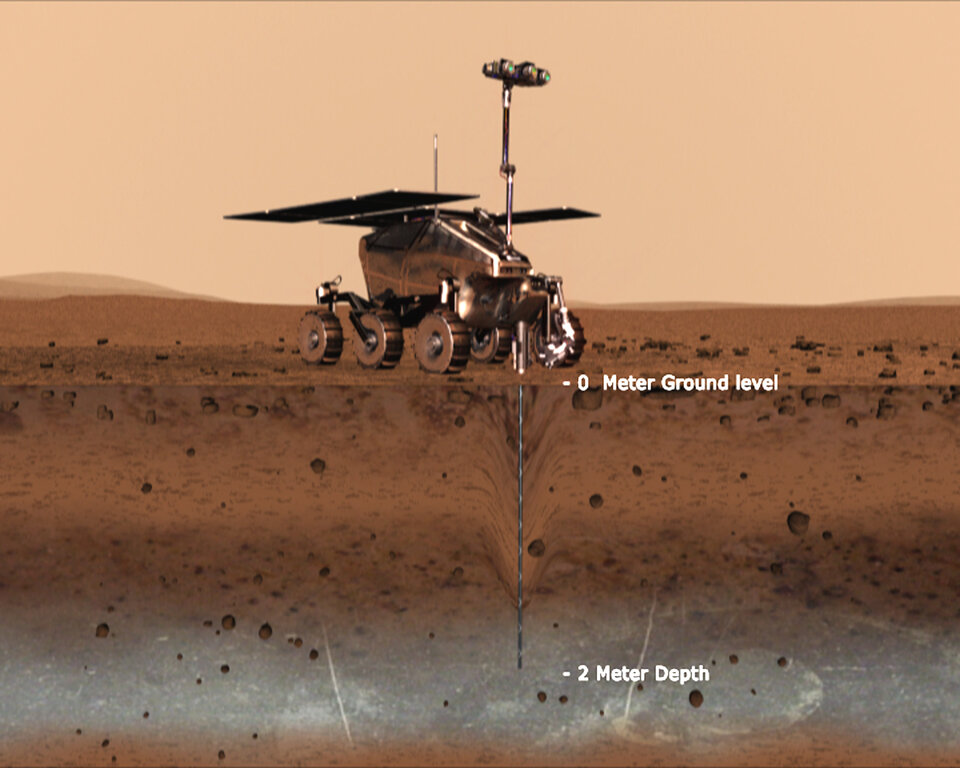Innovative space drill among results of ESA’s Networking/Partnering Initiative
Getting to another planet is hard enough, but getting under its surface can be really tough. So the innovative engineering projects presented at ESA’s first Networking/Partnering Initiative Day included a novel drill system taking inspiration from the timber-boring wood wasp.
Apollo astronauts wielded rotary drills to penetrate beneath lunar terrain, but the close-packed regolith proved extremely resistant. Similarly future robotic landers will need to drill into planetary surfaces, but the total force available will be small, dictated by limited mass and power as well as low local gravity fields.
A team from the Surrey Space Centre in the UK and France's Institut Supérieur de l’Aéronautique et de l’Espace (ISAE) looked for a way to increase drilling efficiency, and found it in the humble wood wasp, which drills holes into trees in order to lay its eggs.
The research was supported through ESA’s Networking/Partnering Initiative (NPI), which supports work on advanced technologies carried out by universities and research institutes, often in collaboration with industry. Its results are among those presented at ESA’s first NPI Day, which took place at ESA’s European Space Research and Technology Centre (ESTEC) on 28 January 2010.

The team’s analysis showed the wood wasp’s egg-laying ‘ovipositor’ to be divided into two elements, one side possessing cutting teeth and the other side equipped with pockets to remove the resulting debris. Applying this lesson in natural engineering, they have so far developed a double-drill bit able to penetrate metres underground using a few watts of power, providing more competitive performance compared to static penetration.
“Now three years old, ESA’s NPI co-funds PhD or post-Doctoral research carried out in universities or research institutes,” said Joerg Wehner of NPI. “It also provides access to ESTEC facilities, technical support and networking opportunities to forward their research.

“The goal is to stimulate research for space applications in general as well as taking advantage of potential ‘spin-in’ for space from other technologies originally intended for other domains.”
A total of six oral and around 40 poster presentations were made on NPI-backed activities, followed by a lively discussion between the different participants. Presentations included topics such as:
manufacturing very thin solar cells for space, from Germany’s Institute for Solar Energy Research Hameln/Emmerthal (ISFH) and and Azur Space Solar Power
pinpoint landing control for planetary probes, from France’s Institute of Analysis and Architecture of Systems (CNRS-IAAS) and EADS Astrium Toulouse
formation flying techniques for ESA’s multi-satellite Darwin mission, from Cranfield University and EADS Astrium UK
observation and analysis of NASA’s Stardust probe re-entry, from Stuttgart University, Germany
insect-like ‘swarm’ intelligence applied to robotics, from the Technical University of Madrid
- vibration-free miniature cryogenic coolers to enhance the accuracy of optical detectors in space, from the University of Twente in the Netherlands.
More information
To review all the NPI Day presentations, please follow the right hand link. To find out more about getting involved with NPI, contact Joerg.Wehner @ esa.int





